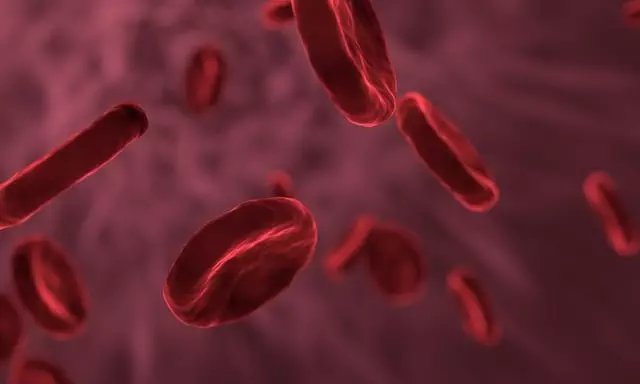Fat Cell Freezing (cryolipolysis) is a non-invasive body contouring technique using cooling technology to freeze and rupture targeted fat cells, which are then metabolized and expelled by the body. This method offers a safer alternative to liposuction with minimal downtime, targeting stubborn fat deposits in areas like love handles, belly fat, and outer thighs. With advanced imaging, healthcare professionals precisely identify fat accumulation for efficient freezing procedures. Post-treatment, patients can resume normal activities, experiencing temporary side effects like redness, swelling, or discomfort. Fat cell freezing aims to reduce the appearance of stubborn fat rather than significant overall weight loss.
“Discover the transformative power of Fat Cell Freezing, a non-invasive body contouring technique that’s revolutionizing aesthetics. This comprehensive guide explores the science behind freezing fat cells, its targeted approach, and diverse benefits for various individuals. From understanding the procedure to addressing safety concerns and recovery, we debunk myths and provide a step-by-step overview. Learn why Fat Cell Freezing is a popular choice for those seeking body shaping without surgery.”
Understanding Fat Cell Freezing: A Non-Invasive Body Contouring Technique

Fat Cell Freezing, also known as cryolipolysis, is a non-invasive body contouring technique that has gained popularity for its ability to reduce stubborn fat deposits. This procedure involves the targeted freezing of fat cells, leading to their breakdown and subsequent elimination by the body’s natural processes. By targeting specific areas, such as love handles, belly fat, or outer thigh fat, this method offers a non-surgical alternative for those seeking body shaping without incisions or extensive recovery periods.
Unlike traditional liposuction, Fat Cell Freezing does not require any anaesthesia or lengthy downtime. The process involves the application of cooling technology to the targeted areas, causing fat cells to crystallize and rupture. Over time, these damaged fat cells are metabolized and expelled from the body, resulting in a slimmer appearance and improved body contours. This innovative approach has proven effective for many individuals looking to enhance their physique without undergoing more invasive procedures.
How Does Fat Cell Freezing Work? Unlocking the Science Behind It

Fat cell freezing, also known as cryolipolysis, is a non-invasive procedure that selectively targets and freezes fat cells. The science behind it involves a precise cooling process that disrupts the fat cell’s structure and metabolism, leading to their gradual breakdown and elimination by the body. This targeted approach ensures minimal damage to surrounding tissues, making it a safer alternative to traditional liposuction.
The procedure begins with the application of a cooling mechanism on specific areas where fat reduction is desired. Cryolipolysis uses controlled cold temperatures to target and freeze fat cells while preserving nearby nerves and blood vessels. Over time, the frozen fat cells break down into smaller components that are naturally processed and removed by the lymphatic system, resulting in reduced fat deposits in the treated areas.
Targeted Approach: Identifying Areas for Fat Cell Freezing Treatment

In the realm of Fat Cell Freezing, a targeted approach is key to achieving optimal results. This innovative treatment goes beyond general body contouring by identifying and focusing on specific areas of fat accumulation. Through advanced imaging techniques, healthcare professionals can pinpoint precise locations for the freezing process. By targeting these areas, treatments become more efficient, ensuring that fat cells are effectively reduced without affecting surrounding healthy tissues.
The targeted nature of Fat Cell Freezing offers several advantages. It allows for personalized plans tailored to individual needs, making it an attractive option for those seeking localized fat reduction. Moreover, this method promotes safer outcomes by minimizing the risk of damage to nerves and blood vessels in the treated areas.
Benefits and Applications: Who Can Benefit from This Procedure?

Fat Cell Freezing offers a non-invasive and effective way to reduce stubborn fat, providing numerous benefits for those seeking body contouring. This procedure is especially beneficial for individuals who have tried diet and exercise without seeing significant results in specific areas, like the abdomen, thighs, or buttocks. By targeting and freezing selected fat cells, it promotes long-term fat reduction without surgery or downtime.
The versatility of Fat Cell Freezing makes it suitable for a wide range of candidates. It is particularly appealing to people who maintain a healthy lifestyle but still struggle with localized fat deposits. Whether it’s for aesthetic reasons or to improve overall body composition, this treatment can help individuals achieve their desired shape and boost their confidence.
Safety and Side Effects: What Every Patient Needs to Know

Fat Cell Freezing, also known as cryolipolysis, is a non-invasive procedure that has gained popularity for its effectiveness in reducing localized fat. While it’s generally considered safe, like any medical treatment, it does come with potential side effects. Common temporary issues include redness, swelling, and numbness at the treatment area. These usually subside within a few days to weeks. More serious but rare complications may include tissue damage, nerve damage, and blood clots.
It’s crucial for patients to be fully informed about these risks before proceeding. During consultations, medical professionals should discuss individual health histories, address any concerns, and provide clear instructions for post-treatment care. Patients should also be aware of the importance of maintaining a healthy lifestyle—including a balanced diet and regular exercise—to support the results of Fat Cell Freezing and overall well-being.
The Process: Step-by-Step Guide to a Successful Fat Cell Freezing Session

The process of fat cell freezing, or cryolipolysis, involves a step-by-step approach to ensure optimal results. Initially, a consultation is conducted to assess the patient’s goals and medical history. This is crucial for tailoring the treatment plan to individual needs. During this session, the doctor will discuss areas of concern, expected outcomes, and any potential risks or side effects.
On the day of the procedure, patients are prepared, typically with local anesthesia applied to the targeted area. A specialized device is then used to deliver controlled cooling to precisely target fat cells without damaging surrounding tissues. This cryo-device circulates liquid nitrogen to freeze the fat cells, causing them to die and gradually be eliminated by the body’s natural processes over the following weeks. After the procedure, patients can return to their normal activities, though some mild discomfort or bruising may occur.
Recovery and Results: What to Expect After the Treatment

After a successful fat cell freezing treatment, patients can expect to see visible results within a few months. The body naturally processes and eliminates the frozen fat cells over time, leading to reduced fat deposits in the treated areas. This non-invasive procedure offers a minimal recovery period compared to traditional liposuction, with most people able to resume their regular activities soon after.
Patients may experience some temporary redness, swelling, or discomfort in the treated areas, but these side effects are usually mild and subside quickly. It’s important to follow the post-treatment instructions provided by your healthcare professional, including staying hydrated, maintaining a healthy diet, and avoiding strenuous exercise for a short period. Regular check-ins with your provider will allow them to assess progress and ensure optimal results.
Common Misconceptions Debunked: Separating Fact from Fiction

Many people have heard about fat cell freezing as a weight loss method, but there are numerous misconceptions surrounding this non-invasive procedure. One common mistake is assuming that it’s a quick fix for weight loss. In reality, fat cell freezing, or cryolipolysis, is not a weight loss tool per se; instead, it selectively targets and destroys fat cells in problem areas. It’s about shaping your body and reducing the appearance of stubborn fat, not necessarily losing a significant amount of weight overall.
Another false belief is that it’s painful or has severe side effects. Modern technologies have made fat cell freezing more comfortable, with minimal discomfort during treatment. As for side effects, they are usually mild and temporary, such as redness, swelling, or numbness in the treated area—similar to after a workout. This innovative procedure offers a safe and effective alternative for those seeking to improve their body contour without surgery.
